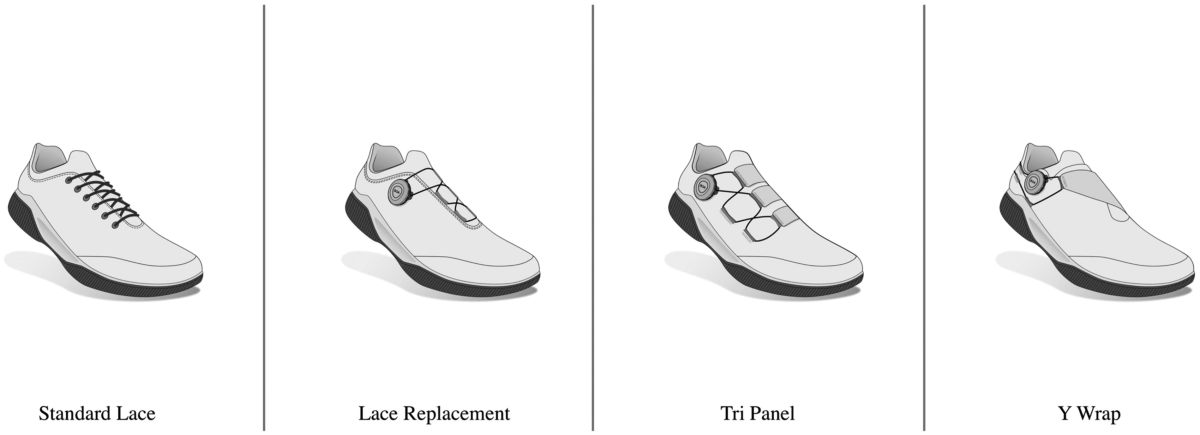Most innovations in athletic shoes—especially running shoes—have focused on one area: the midsole. From new cushioning foams to carbon fiber plates, brands have been working hard to develop shoes that are lighter and more propulsive than ever. But a new study shows the midsole isn’t the only place where innovations can lead to increased performance: Uppers and lacing systems are just as important. BOA Technology—creator of BOA closures, which are used in everything from trail runners to cycling cleats—partnered with researchers at the University of Denver to assess how versions of the BOA Fit System compared with traditional laces. The results? Athletes showed significant improvements in agility and speed when wearing shoes with BOA closures.
To run the study, researchers recruited 31 NCAA Division 1 and club-level male athletes from lacrosse, rugby, soccer, and tennis teams in the Denver area. All participants wore Adidas Adizero Ubersonic 3.0 shoes with one of four different upper configurations: standard laces, BOA lace replacement, BOA Tri-Panel, and BOA Y-Wrap (see below).

The athletes performed a series of drills designed to assess common movements found across sports—lateral skater jump repeats and sprinting back and forth between lines, for example—while researchers recorded their movements using motion-capture cameras and force-measuring platforms. Ultimately, the athletes generated a dataset of thousands of movements for the researchers to analyze.
The Tri-Panel and Y-Wrap Boa closures were the clear winners in the study. Both showed performance improvements between 3 and 9 percent (for comparison, Nike’s much-hyped Next% shoes enhance running economy by around 4 to 5 percent). In the lateral skater jump drill, both shoes reduced ground contact time between 4.3 and 6.6 percent, which means the athletes were able to change direction faster than in traditional shoes.
Of the two designs, the Tri-Panel configuration logged the strongest results across all drills. Athletes wearing this design showed decreased effort expended in one drill and increased speed in another two. The Tri-Panel was also a favorite among the participants—nearly three-quarters of the trial group felt they performed better in the Tri-Panel compared to traditional laces.
This is one of the first studies to focus on uppers and assess their effect on performance, and the researchers caution that more trials are needed to really understand how upper design interacts with the body. But they do point out that the the BOA system allows for a tighter wrap around the foot than laces, which leads to two possible explanations for the performance gains.
First, the tighter fit creates less energy loss during quick movements, and second, it makes athletes more aware of their movements (also known as proprioceptive feedback) and better able to fine-tune them on the fly.
While scraping off a few tenths of a second during an agility drill might not sound like much for most people, the data is a wake-up call to elite athletes—or anyone looking to push themselves to be just a little bit better: Don’t just focus on what’s under your feet, because the top of the shoe counts too.
from Men's Journal https://ift.tt/2NIx7uT



0 comments